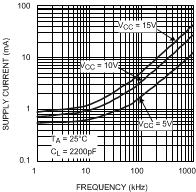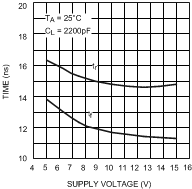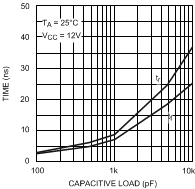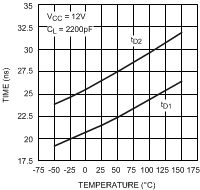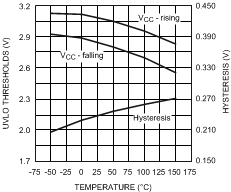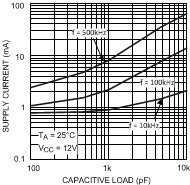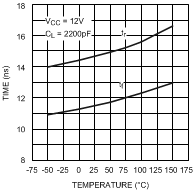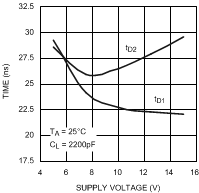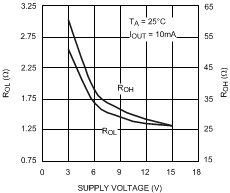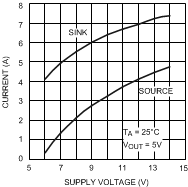ZHCSDS0B July 2011 – May 2015 SM74101
PRODUCTION DATA.
6 Specifications
6.1 Absolute Maximum Ratings
over operating free-air temperature range (unless otherwise noted) (1)| MIN | MAX | UNIT | ||
|---|---|---|---|---|
| VCC to VEE | −0.3 | 15 | V | |
| VCC to IN_REF | −0.3 | 15 | V | |
| IN/INB to IN_REF | −0.3 | 15 | V | |
| IN_REF to VEE | −0.3 | 5 | V | |
| Tstg Storage temperature | −55 | 150 | °C | |
| Maximum Junction Temperature | 150 | °C | ||
(1) Stresses beyond those listed under Absolute Maximum Ratings may cause permanent damage to the device. These are stress ratings only, which do not imply functional operation of the device at these or any other conditions beyond those indicated under Recommended Operating Conditions. Exposure to absolute-maximum-rated conditions for extended periods may affect device reliability.
6.2 ESD Ratings
| VALUE | UNIT | |||
|---|---|---|---|---|
| V(ESD) | Electrostatic discharge | Human-body model (HBM), per ANSI/ESDA/JEDEC JS-001(1) | ±2000 | V |
(1) JEDEC document JEP155 states that 500-V HBM allows safe manufacturing with a standard ESD control process.
6.3 Recommended Operating Conditions
over operating free-air temperature range (unless otherwise noted)| MIN | MAX | UNIT | ||
|---|---|---|---|---|
| Operating Junction Temperature | -40 | 125 | °C | |
| VCC Operating Range | VCC – IN_REF and VCC - VEE | 3.5 | 14 | V |
6.4 Thermal Information
| THERMAL METRIC(1) | SM74101 | UNIT | |
|---|---|---|---|
| NGG | |||
| 6 PINS | |||
| RθJA | Junction-to-ambient thermal resistance, 0 LFPM Air Flow | 40.0 | °C/W |
| RθJC(top) | Junction-to-case (top) thermal resistance | 50.8 | |
| RθJB | Junction-to-board thermal resistance | 29.3 | |
| ψJT | Junction-to-top characterization parameter | 0.7 | |
| ψJB | Junction-to-board characterization parameter | 29.5 | |
| RθJC(bot) | Junction-to-case (bottom) thermal resistance | 7.5 | |
(1) For more information about traditional and new thermal metrics, see the IC Package Thermal Metrics application report, SPRA953.
6.5 Electrical Characteristics
Over operating junction temperature range, VCC = 12 V, INB = IN_REF = VEE = 0V, No Load on output, unless otherwise specified.| PARAMETER | TEST CONDITION | MIN | TYP | MAX | UNIT | |
|---|---|---|---|---|---|---|
| SUPPLY | ||||||
| UVLO | VCC Under-voltage Lockout (rising) | VCC – IN_REF | 2.4 | 3.0 | 3.5 | V |
| VCCH | VCC Under-voltage Hysteresis | 230 | mV | |||
| ICC | VCC Supply Current | 1.0 | 2.0 | mA | ||
| CONTROL INPUTS | ||||||
| VIH | Logic High | 2.3 | V | |||
| VIL | Logic Low | 0.8 | V | |||
| VthH | High Threshold | 1.3 | 1.75 | 2.3 | V | |
| VthL | Low Threshold | 0.8 | 1.35 | 2.0 | V | |
| HYS | Input Hysteresis | 400 | mV | |||
| IIL | Input Current Low | IN = INB = 0V | -1 | 0.1 | 1 | µA |
| IIH | Input Current High | IN = INB = VCC | -1 | 0.1 | 1 | µA |
| OUTPUT DRIVER | ||||||
| ROH | Output Resistance High | IOUT = -10mA (1) | 30 | 50 | Ω | |
| ROL | Output Resistance Low | IOUT = 10mA (1) | 1.4 | 2.5 | Ω | |
| ISOURCE | Peak Source Current | OUT = VCC/2, 200ns pulsed current | 3 | A | ||
| ISINK | Peak Sink Current | OUT = VCC/2, 200ns pulsed current | 7 | A | ||
| LATCHUP PROTECTION | ||||||
| AEC–Q100, METHOD 004 | TJ = 150°C | 500 | mA | |||
(1) The output resistance specification applies to the MOS device only. The total output current capability is the sum of the MOS and Bipolar devices.
6.6 Switching Characteristics
over operating free-air temperature range (unless otherwise noted)| PARAMETER | TEST CONDITIONS | MIN | TYP | MAX | UNIT | |
|---|---|---|---|---|---|---|
| td1 | Propagation Delay Time Low to High, IN/ INB rising ( IN to OUT) |
CLOAD = 2 nF, see Figure 11 and Figure 12 | 25 | 40 | ns | |
| td2 | Propagation Delay Time High to Low, IN / INB falling (IN to OUT) |
CLOAD = 2 nF, see Figure 11 and Figure 12 | 25 | 40 | ns | |
| tr | Rise time | CLOAD = 2 nF , see Figure 11 and Figure 12 | 14 | ns | ||
| tf | Fall time | CLOAD = 2 nF , see Figure 11 and Figure 12 | 12 | ns | ||
6.7 Typical Characteristics
